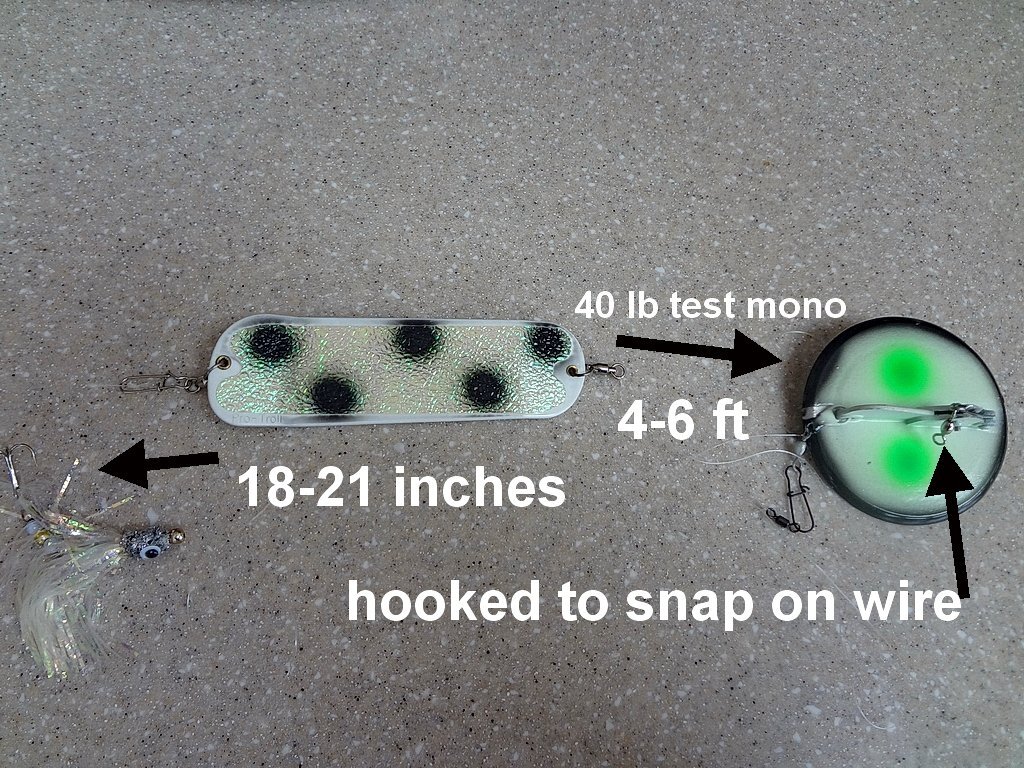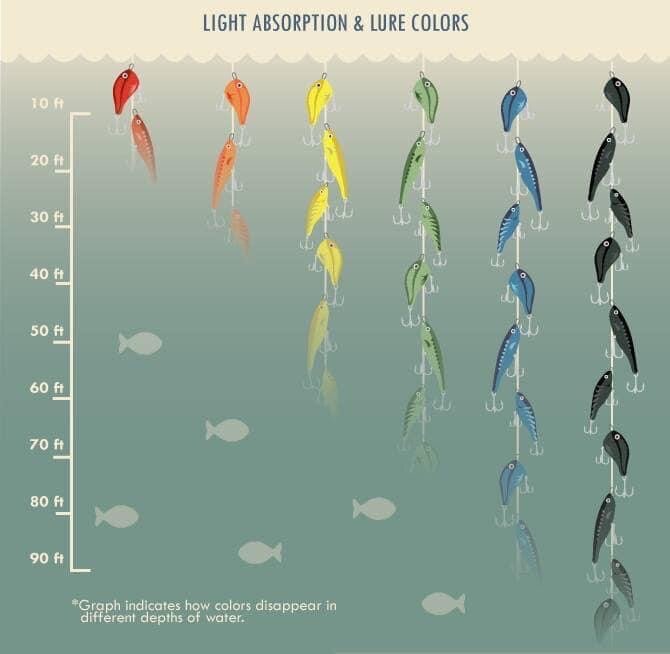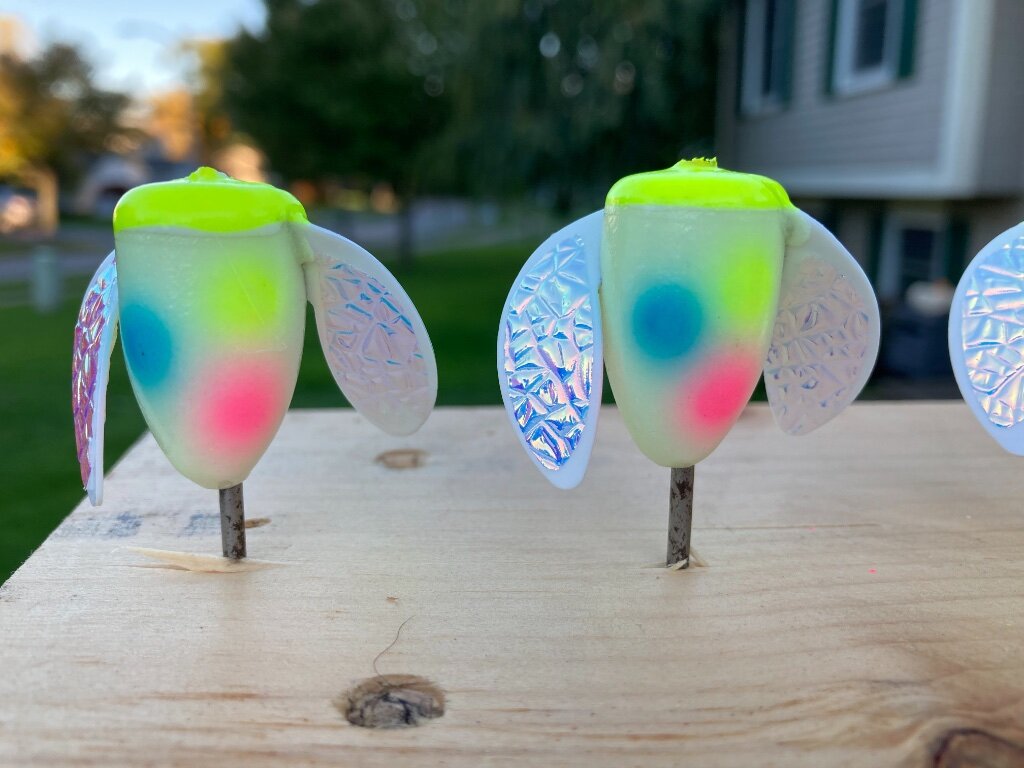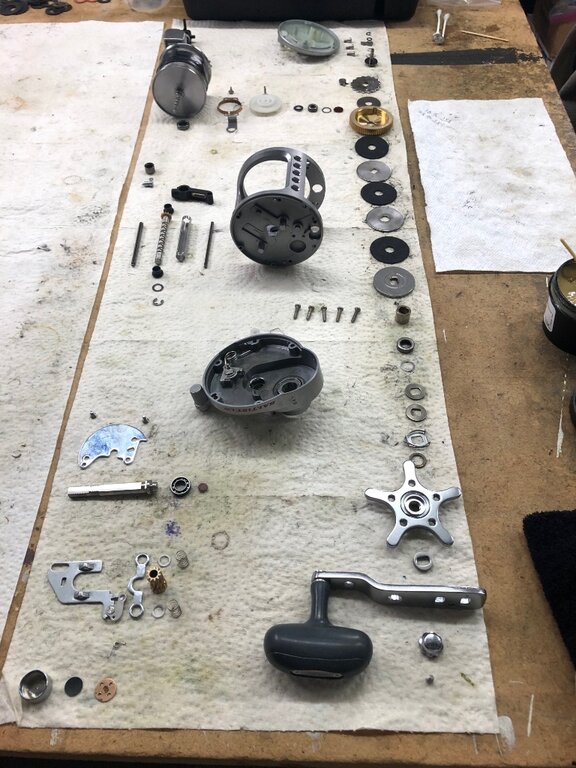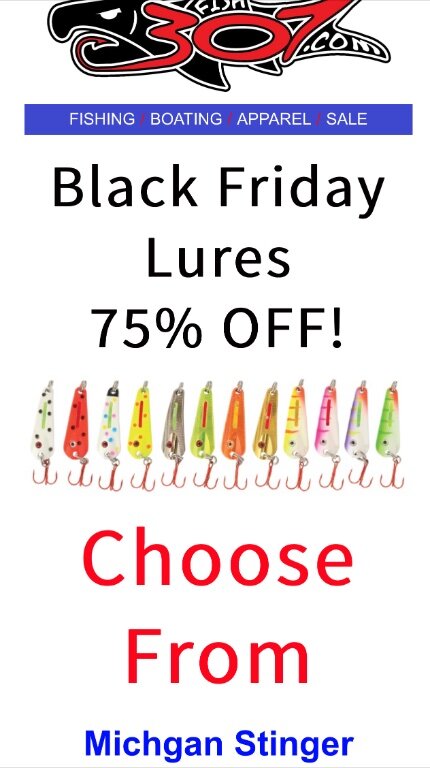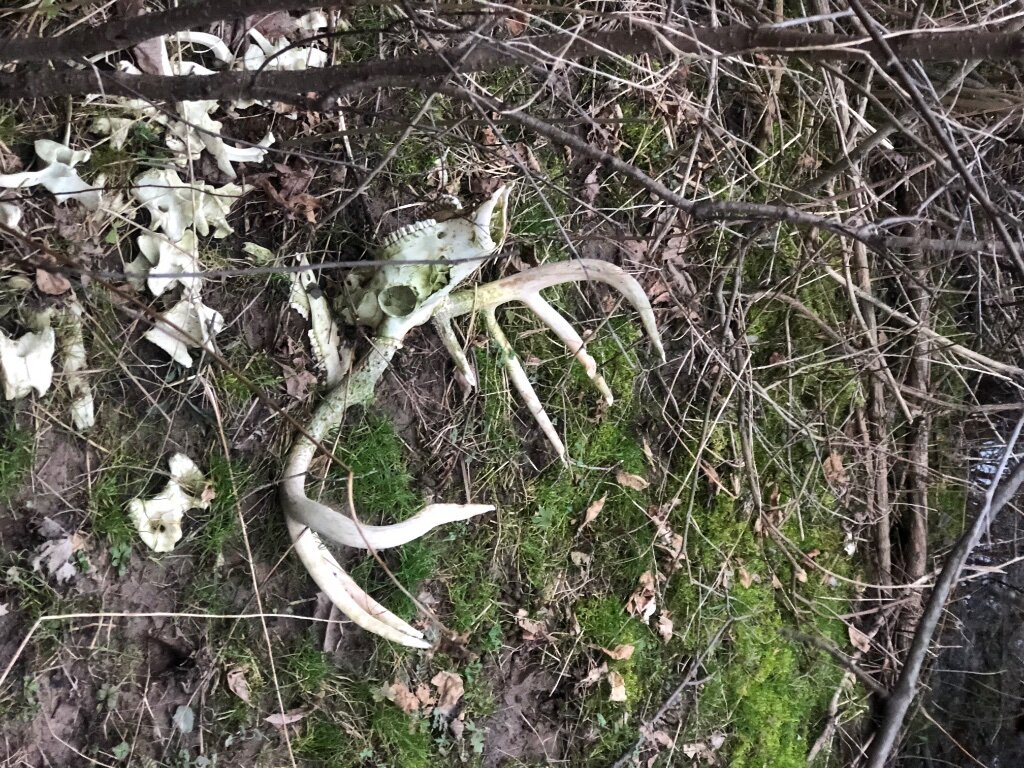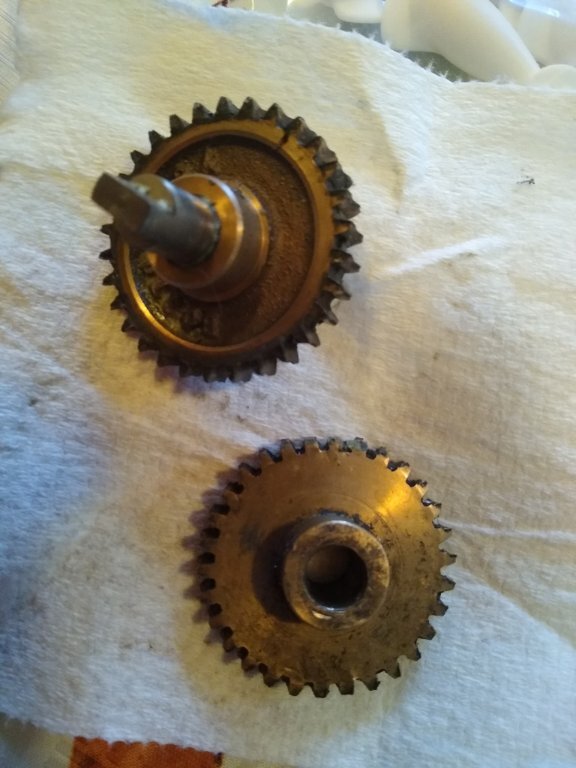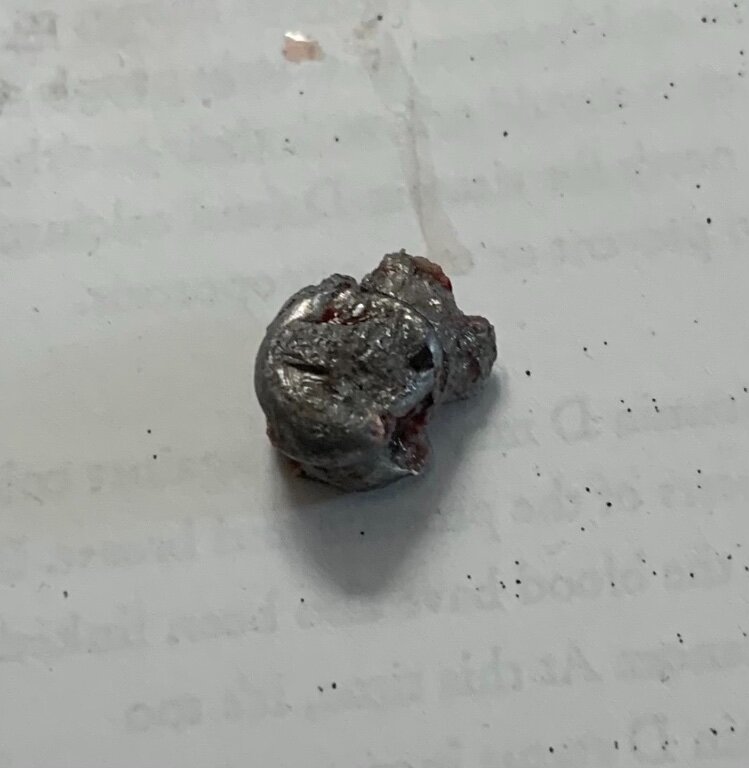-
Posts
13,818 -
Joined
-
Last visited
Content Type
Profiles
Forums
Events
Gallery
Store
Everything posted by Sk8man
-
Something that can help battery life is to cut out a piece of styrofoam insulation in the shape of the base of the depth finder and place it at the bottom of it to keep it from direct contact with the ice I velcroed mine to the base of the cover. By the way, I am still on the same regular 9 amp battery that came with my Vexilar which I bought in 2005. I have charged it every single time upon return home from ice fishing and it has never gone below 40 percent charge after coming off the ice.
-
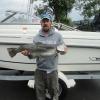
Mono for divers/flashers
Sk8man replied to HoundsNTrout's topic in Questions About Trout & Salmon Trolling?
Cut the kinks out if not too much wire lost or replace wire: There are a number of ways to terminate the wire but the two most common are: a) tying the wire using a wire knot, and b) using a wire crimp. many folks use the first option while I use the second alternative. Although some people use shrink wrap I don't like it because you can't see what is going on beneath it (e.g. possible strand separations etc.). If using the simple wire knot everything is visible. Using the crimp method which a lot of people don't like because it is more tedious and has to be done correctly requires care but in more than 50 years of wire use (both dipsy and Seth Green rigs) I have never had a failure at the termination point. The key to it is making the termination into a unit rather than discrete parts where wiggling movement and bending can degrade the connection. This is done by CAREFULLY crimping the entire crimp sleeve so that it holds the wire without actually pinching it with too much force so that the ends of the crimp sleeve are closed as well as the mid portion (preventing wiggling of the wire against the edges of the sleeve) and attaching a high quality solid ring ball bearing swivel and then encasing the entire crimp and wire within it with CLEAR hot glue right up to the loop in the wire. This prevents any movement of the wire in the crimp sleeve and makes the connection a single unit and with the clear glue you can still see and monitor the wire condition and connection. A little more work than tying but pretty much "foolproof" -

Water depth and lure colors (Light spectrum penetration)
Sk8man replied to RupturedDuck47's topic in Finger Lakes Discussion
-

Mono for divers/flashers
Sk8man replied to HoundsNTrout's topic in Questions About Trout & Salmon Trolling?
Hounds you have been given some good advice from very competent fishermen here. The use of wire has a definite learning curve to it along with some important precautions and practices. First of all tension on the wire has to be maintained at all times whether in use or when stored. To start with you may need to let out a lot of wire with either a weight attached or a dipsy without anything following it to allow the wire to play out behind the boat while under tension and then carefully reel it back in so that it is evenly nested on the reel spool. This can help get you off to a better start. Usually the curly ques develop on the first few feet of the line toward the end and can result from either too little tension on the wire or result from a dipsy spinning in the water with an inferior swivel among other things. When you see the curly cues appear just cut off that few feet of wire and re-terminate with a good quality ball bearing swivel. Usually wire comes in 1,000 ft spools so if you have a kink that isn't too far up cut that section out and re-terminate. If too much wire is cut your line counter will be less accurate though but even up to 100 ft could be lost without it affecting the functionality of things (still 300 yards of wire which is the length of a football field). Always keep your wire tight on the rod and the reel and when you are letting out a dipsy. Let it out slowly by using the clicker with the drag loosened NOT by the free spool lever. Try to keep the boat straight while letting out wire so it doesn't get into other setups. If you follow this process you should have fewer mishaps or problems. Wire (or the braid specifications already mentioned) is the way to go with dipsys. The key to it is patience -
-
-
-
-
Man is that ever right on target. Folks can continue to keep their head in the sand and ignore the reality but we are on a definite collision course with China and have been since Nixon opened up relations with them. Their clear goal is to be number one in the world and to dominate the world and its resources and they have made substantial progress toward that end.They already own us and much of our technology. They have even reportedly announced to their population to prepare for war. We are asleep at the switch. They have been preparing for a long time for this and Taiwan will probably be "tipping point" and perhaps sooner than later. This is not the time for a totally incompetent government which we now have. Gloom and doom....yes and rightfully so.
-
This might sound counter intuitive but when the wind gets to about 10 mph from north or south on most of the Finger lakes you have white caps, and for perch fishing it is very difficult to either drift, anchor, or keep over the fish with Spot Lock on an electric trolling motor. With a wind from other directions despite it being higher velocity it may be possible to locate in a bay or protected area on the side of the lake the wind is coming from as many of the Finger Lakes such as Canadaigua have wooded steep sides which can block some of the wind velocity. You may be stuck either anchoring up with anchors in the front and back or trying to hover in place with Spot Lock though with higher gusts.
-

Sold / Closed Twin Minnow lures
Sk8man replied to Copperliner's topic in Classifieds - Buy, Sell, Trade or Rent
Very worthy activities -

Sold / Closed Twin Minnow lures
Sk8man replied to Copperliner's topic in Classifieds - Buy, Sell, Trade or Rent
The black with the white belly is by far the best one as it is thought that the action and appearance is thought to closely resemble the Slimy Sculpin (Stonecat, Tomcat etc.) which lakers love.They are deadly behind single strand copper trolled slowly near bottom. Easy paint job on those pictured -
-

Wire and Copper "repair" ? or toss it?
Sk8man replied to HoundsNTrout's topic in Tackle and Techniques
One of the main things to consider is "confidence" in your equipment and line (whether wire or not) being a major component. The copper wire loss of 100 ft. could either be made into a 200 ft or scrapped and another new 300 ft. put on. Copper wire can be spliced but it is never as strong as the original new wire and constantly running over the guides and tip can degrade it further. A 300 ft. spool of copper isn't real expensive and what price is confidence in your equipment worth? With stranded wire (I'm assuming as you didn't say "stranded") a loss of 100 ft usually isn't critical as the 900 ft left equates to the length of three football fields which should still give you plenty of room to play large kings etc. The loss of the 100 ft may however affect the accuracy of your line counter but even that shouldn't be a major concern. -

Wanted WTB Michigan stinger scorpions
Sk8man replied to sammygee's topic in Classifieds - Buy, Sell, Trade or Rent
-
Welcome to LOU and good luck with it.
-
-

New SalmonAngler/Gear questions
Sk8man replied to Odie 1's topic in Questions About Trout & Salmon Trolling?
The flea season varies from year to year and the concentrations in the lake vary in their distribution as well, but usually when the water temp in in the 60's and higher they are present and last until temps go back down usually in the early Fall. They are intermittent in the lake though for whatever reason and sometimes they don't seem to be as problematic but when they highly concentrate they can be terrible and prevent you from retrieving your line without a lot of hassle especially when you have a good fish on and they can make a mess of your boat as well. Best of luck in whatever you decide to do and don't let it deter you from having some fun -

New SalmonAngler/Gear questions
Sk8man replied to Odie 1's topic in Questions About Trout & Salmon Trolling?
The 7 strand/19 strand/ braid issue is basically like many of the other things a "personal preference" issue. Each of them has strengths and weaknesses depending on what someone considers a "priority" for them. I've been using various wire options for over 50 years and none of them are "perfect" but depending on what they are used for, the care given them, the proper installation on the reels, and proper eyes and tips used on the rods any of it works once you get used to it. seven strand cuts through the water a bit better than 19 strand but it is also harder on the equipment and either a high quality roller tip (stainless) is needed or a twilli tip (the much cheaper option but a different feel to it), can develop curly ques and kinks when precautions are not taken in its care, can cut into or cut through cheap roller tip side plates. 19 strand on the other hand is not as hard on the eyelets or rod tips and generally less damaging to rod guides and tips but can be a bit "unwieldy) in that it is "springy" without spool memory, but it's compositional filaments are very fine and can break and weaken the wire without it being very apparent visually. The use of crimps on wire brings another potential concern if not properly done and is a main reason wire knots are used with the wire by many folks. Improper crimping can create weak spots at either juncture (end) of the crimp connection by allowing the wire to wiggle back and forth on the edge of it weakening the wire and potentially breaking strands over time. Crimping too hard at the ends of the crimp can also damage the wire and weaken it and both types of wire can be vulnerable to this. The advice that was given about using the 19 strand for a beginner or novice was probably related to the fact that it may be less prone to kinking and when not used to 7 strand use and maintenance 19 strand could be less problematic ; not that it is necessarily "better". A lot of people prefer braid over wire of either type, but again there are strengths and weaknesses. Braid cuts through the water with reduced "blowback", kinking isn't a real problem, it is easier on the hands but over time can also saw into rod eyelets and tips nearly like 7 strand especially found on poorer quality rods. When using smaller diameter braid like 30 or 40 lb test the braid can nest in the edge of a roller tip and cut off conributing to the donation of equipment to Mother Nature. The biggest general drawback to using braid especially in smaller diameters is that water fleas easily accrue on it during flea season and depending on type of flea harder to remove from the line (the Fishhook type of fleas seems harder to remove than the Spiny waterfleas). Braid may need to be replaced more frequently than wire that is carefully taken care of. -

New SalmonAngler/Gear questions
Sk8man replied to Odie 1's topic in Questions About Trout & Salmon Trolling?
A lot of different ways to go with this but most of us use 1000 ft of 7 strand wire, some use 1000 ft of 19 strand. Basically the 7 strand isn't as kink resistant and may develop curly ques more easily than 19 strand stainless wire but the 19 strand has finer filament wires composing it that can break without noticing them and it is "springyier". It is also easier on the guides and tips of the rods. If mono backing is used it is usually to protect the spool and keep the wire from nesting unevenly on the spool and a short length of 40 lb or so used (e..g. 50 ft or so). One problem with pre-spooled wire is you don't know who put it on (and whether competently or not). The wire should be put on under even tension and started at the center of the spool and spread evenly across the spool. It is also helpful after it is loaded on the reel to attach a weight or diver without anything else on it while in the boat and running out about half to three quarters of the wire under tension (carefully and slowly). This will allow the wire to be evenly nested on the spool under the right tension and can save you headaches later on. I believe the 30 size reel will hold the 1,000 ft of wire. The Okuma GLT rods should be OK for the riggers and could be used for wire but they have soft tip action and are not really the best choice for wire rods. Stiffer rods seem to better serve that purpose from 6 1/2 to 9 ft or so (twilli tip or roller tip can be used). Often if multiple wire rods are used the shorter ones are used on the inside the longer on the outside. The Okuma 20's or 30's should work OK for the riggers and many folks use either 30 to 40 lb Berkely Big Game mono or Bloodrun SeaFlee in 30 lb test for their main line with fluoro leaders or 20 lb or so for Lake O (can be lighter in the Spring for browns). Just suggestions as there are many ways of going about this with good results and depending on your wallet P.S. ANY wire used should always be kept under tension to avoid problems. -
-

Wanted 1980's Big Jon ES 1000 gears
Sk8man replied to Fishstix's topic in Classifieds - Buy, Sell, Trade or Rent
-
-

for sale : usa eskimo hc40 propane 8 inch auger
Sk8man replied to FISHIN' ADDICTION's topic in Classifieds - Buy, Sell, Trade or Rent
Pics and location could help with the sale


